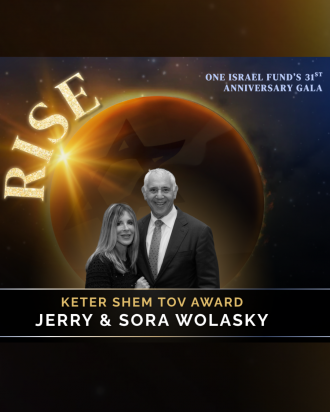Baltimore, MD - Nov. 3, 2025 - It was Nisan 5769 (2009). We were still basking in the afterglow of my daughter Eliana’s Bas Mitzvah, which we had just celebrated with friends and family. Pesach was fast approaching and I quickly switched gears to prepare for the chag. We were eagerly anticipating the first Seder at my parents, a joyous start to this special Yom Tov. And then, without warning, tragedy.
Instead of the last-minute scramble to get everything ready for Yom Tov, we found ourselves sitting shiva for my father z”l. We were dazed, in shock, in grief. All the pre-holiday excitement had vanished. How were we to prepare? Where would we go? The last day of shiva was literally Erev Yom Tov. Rabbi Hauer stepped in and was nosei ol – a limud I later learned from him more deeply when attending his Alei Shor chabura. To be nosei ol – to help carry another’s burden.
Throughout that tragic, busy week, Rabbi Hauer was nosei ol, he carried us. From rushing to Sinai to provide comfort to my mother sh’tichye and to give us halachic guidance as my father took his last breaths; to coming to my home before the levaya to meet with my mother and aunts, asking them to share happy memories of my father, to get a glimpse of him through the eyes of his loved ones; through the levaya where he gave a beautiful hesped; to shiva – he was a constant, calming presence.
And then the question, what about Seder? Where would we go? What should we do? And he reassured us, “don’t worry, it will be taken care of.” And we were, because he took care of us himself. Once again, he was nosei ol. He and his rebbetzin graciously extended a last-minute invite to have all of us join their family at their Seder.
We got up from shiva, exhausted and numb, and found ourselves privy to a Seder the likes of which we had never experienced. It was so regal, yet so warm and intimate, suffused with divrei Torah, sweet melodies and simple questions directed at the younger children.
Rebbetzin Hauer added an element of fun and engagement that I had never seen before – which I later learned was a set piece of a Hauer Seder – she had set out bowls of colorful plastic eggs inside of which were coded pieces of paper. Anyone who asked a question or said over a shtikel Torah was awarded an egg. By the time we reached Shulchan Aruch, we all had festive piles of eggs by our plates. During the meal, the children gathered everyone’s eggs, opened them to collect the pieces of paper, and cracked the “code” which led to cute prizes for each child. The evening was light and deep, fun and serious, and the perfect balm for our aching hearts.
The following year, we found ourselves surprised to receive a repeat invitation to the Hauer Seder. And so began a tradition. We had the incredible zechus to become one of the Hauer “regulars” – year after year, the first night of Pesach and the first night of Sukkos – our families reconnecting to share in the beauty of the chagim.
And so it was this year: we were welcomed into the newly built Hauer sukkah with all the other “regulars,” but which now also included many Hauer grandchildren of all ages and stages. Zman simchaseinu. Once again, the mood was joyous. Rabbi Hauer’s radiant face beamed with nachas. It is my last memory of him. Yehi zichro baruch.















